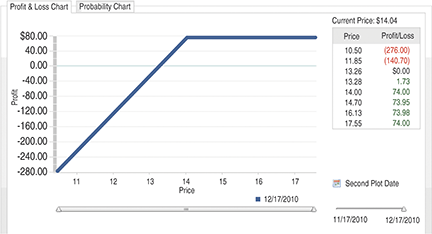OPTIONS
Which Approach Is Better?
Investment Vs. Trading In Covered Call Writing
With the investment approach, shares of stock are viewed as rental property and calls are written to generate additional income from what is expected to be a longer-term stock investment. The trading approach involves executing buy/writes based on the possibility of generating a high annualized rate of return on a given stock/option combination. Which is better?
It can be argued that covered call writing is the second-most commonly used option trading strategy, trailing only straight call and put buying. This is not surprising, since many investors assert that covered call writing is tantamount to collecting free money. While this is not actually true, in order to understand why this belief persists, let’s first look at what constitutes a covered call.
A covered call position simply involves buying and/or holding shares of stock and selling a call option against that stock position. For example, an investor might buy 100 shares of Ciena Corp. (Cien) for $14.04 a share and then sell a call option with a strike price of $14. When he sells the call option, the option seller is paid a premium by the option buyer. In return, the option seller agrees to sell his shares of stock to the option buyer at the strike price of $14 a share if called upon to do so. In this example, the option seller received a price of $0.78 for the option, or a premium of $78 (each stock option is for 100 shares of the underlying security). The amount of premium received will vary based on several factors, including:
- The amount of time left until the option expires
- The volatility of the underlying stock
- The distance between the strike price and the current price of the stock.
The more time until expiration and/or the more volatile the underlying stock, the more premium an option writer will typically demand from an option buyer in order to assume the risk of writing the option in the first place. This is because the covered call writer assumes the obligation to deliver 100 shares of stock to the option buyer if the option is exercised at or before the time the option expires, no matter how high the stock may rise in price. In other words, the greater the risk associated with writing an option, the more premium the option seller will demand.

Figure 1: risk curve for buying cien at $14.04 and selling december 14 call at $0.78. Note that above the strike price the upside potential is capped. This is because for every $1 made on the long stock position, there is $1 lost on the short call option position. In addition, note that the breakeven price for the combined position is lowered by the amount of premium received.